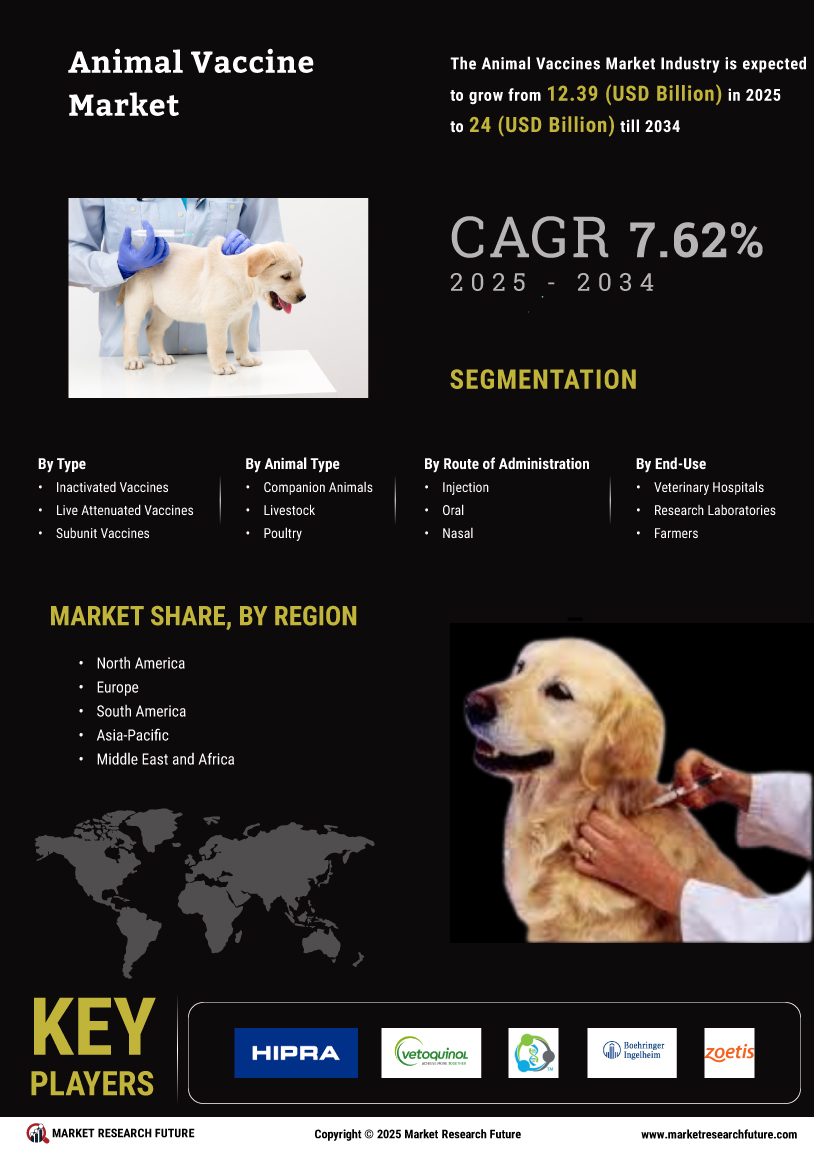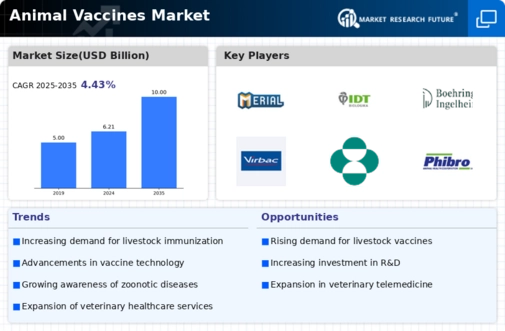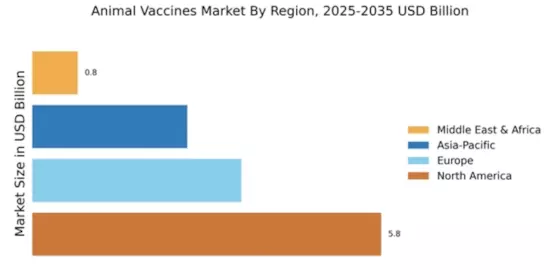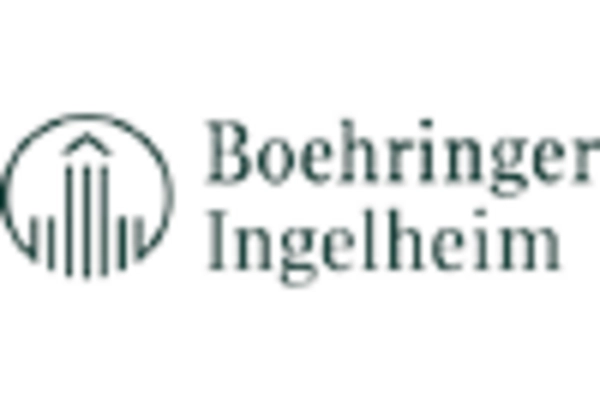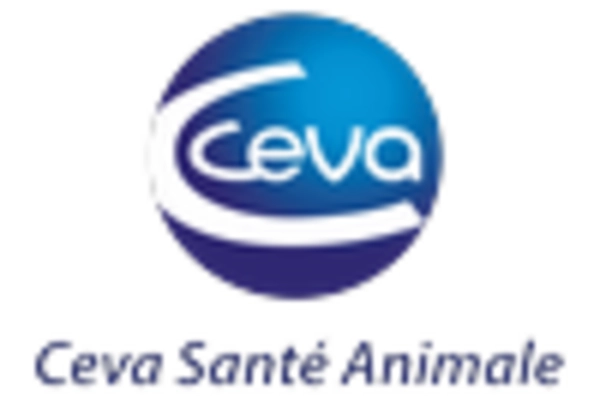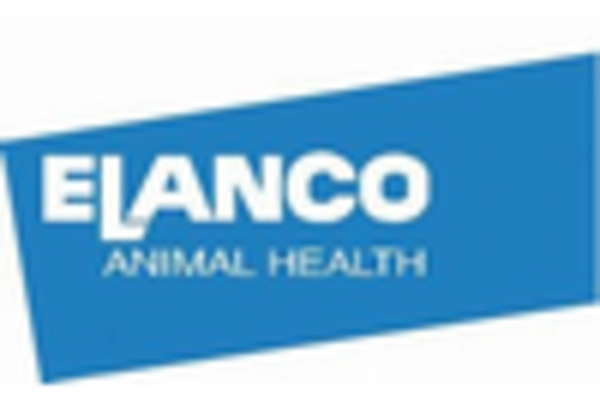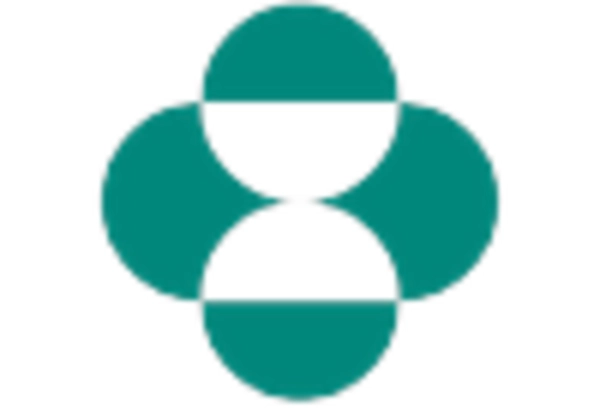Growing Demand for Animal Protein
The increasing global demand for animal protein is significantly influencing the Global Animal Vaccines Market Industry. As populations grow and dietary preferences shift towards protein-rich foods, the livestock sector faces pressure to enhance productivity and health. Vaccination plays a crucial role in ensuring the health of livestock, thereby improving yield and quality. This demand is expected to drive the market towards a valuation of 10 USD Billion by 2035. Consequently, the emphasis on vaccination as a means to sustain animal health and productivity is likely to remain a key focus for stakeholders in the industry.
Rising Awareness of Animal Health
The growing awareness of animal health and welfare among pet owners and livestock producers is significantly impacting the Global Animal Vaccines Market Industry. As consumers become more informed about the benefits of vaccination, there is a corresponding increase in demand for veterinary services and preventive healthcare measures. This trend is particularly evident in developed regions, where pet ownership is high, and owners are more likely to invest in their pets' health. The heightened focus on animal welfare is likely to drive market growth, as stakeholders recognize the importance of vaccination in promoting healthy and productive animals.
Regulatory Support and Initiatives
Regulatory frameworks and government initiatives aimed at promoting animal health are pivotal drivers of the Global Animal Vaccines Market Industry. Governments worldwide are implementing policies that encourage vaccination programs to prevent disease outbreaks and protect public health. For example, initiatives that subsidize vaccine costs or provide funding for research and development contribute to increased vaccination rates among livestock and pets. This regulatory support is expected to facilitate market growth, as it aligns with global health objectives and enhances the overall effectiveness of vaccination strategies.
Increasing Animal Disease Incidence
The rising incidence of infectious diseases among livestock and companion animals is a primary driver of the Global Animal Vaccines Market Industry. For instance, outbreaks of diseases such as avian influenza and foot-and-mouth disease have prompted governments and veterinary organizations to prioritize vaccination programs. This trend is expected to contribute to the market's growth, with the industry projected to reach 6.21 USD Billion in 2024. The need for effective vaccination strategies to combat these diseases underscores the importance of animal vaccines in maintaining animal health and ensuring food security.
Technological Advancements in Vaccine Development
Technological innovations in vaccine development are reshaping the Global Animal Vaccines Market Industry. Advances in biotechnology, such as recombinant DNA technology and mRNA vaccines, are enhancing the efficacy and safety of animal vaccines. These innovations not only improve vaccine performance but also reduce production costs, making vaccines more accessible to farmers. As a result, the market is poised for growth, with a projected CAGR of 4.43% from 2025 to 2035. The integration of cutting-edge technologies into vaccine development is likely to bolster the industry's capacity to address emerging animal health challenges.
